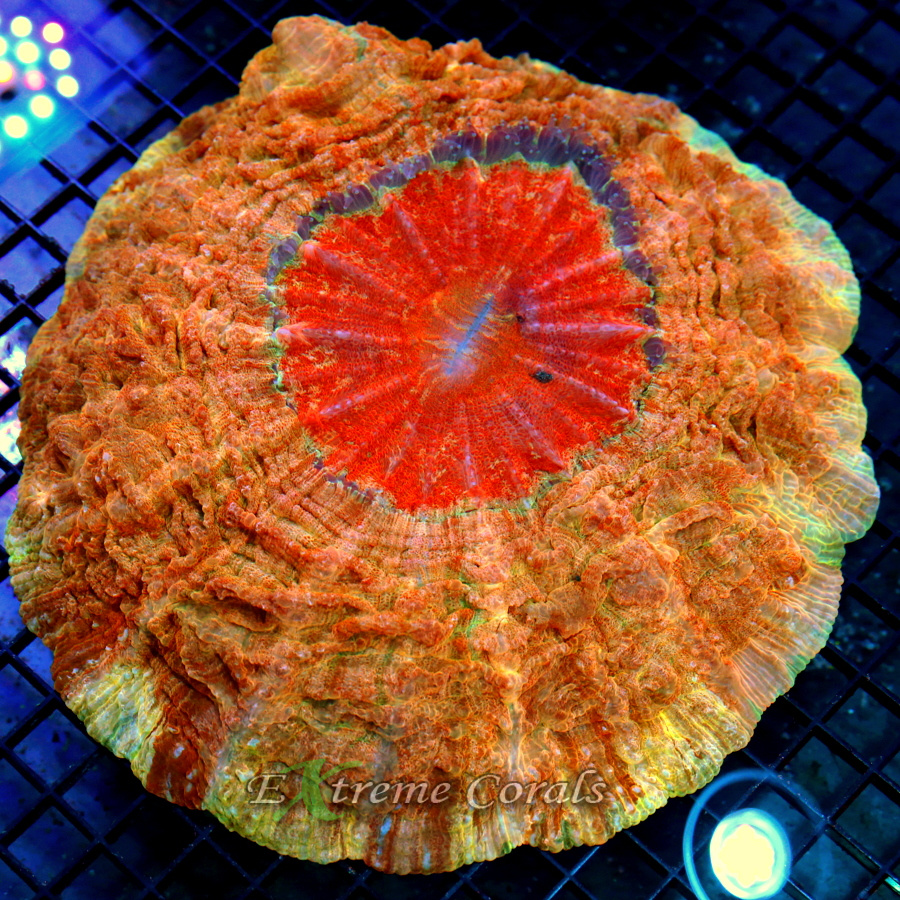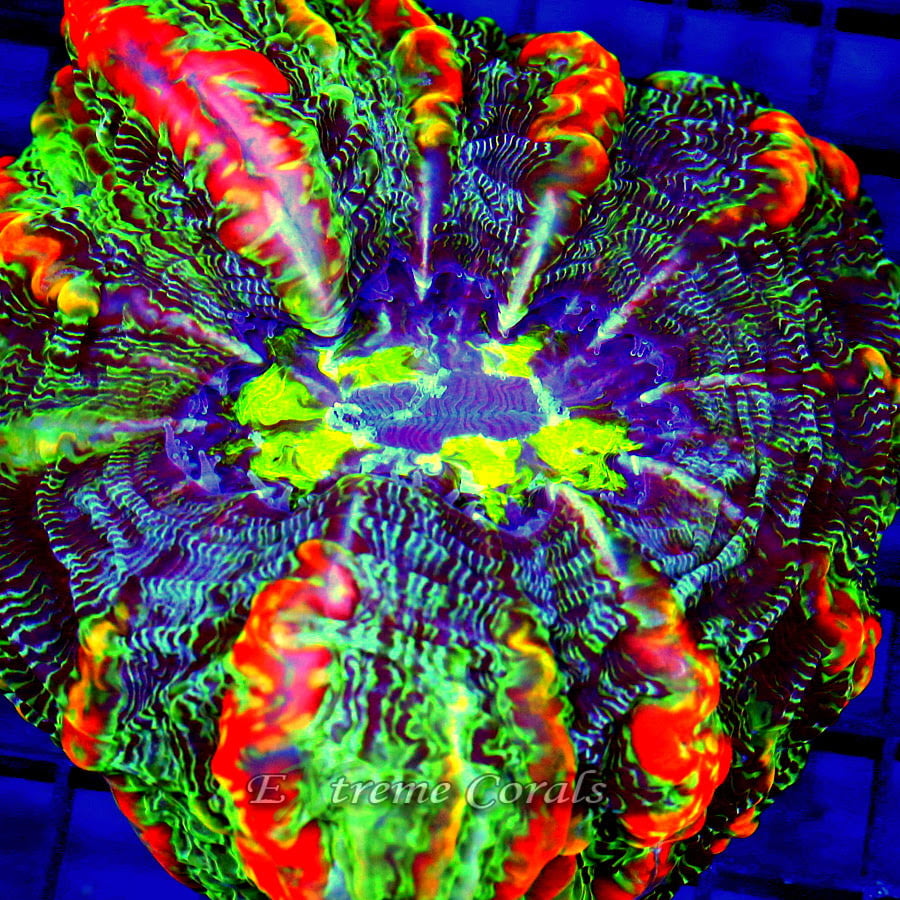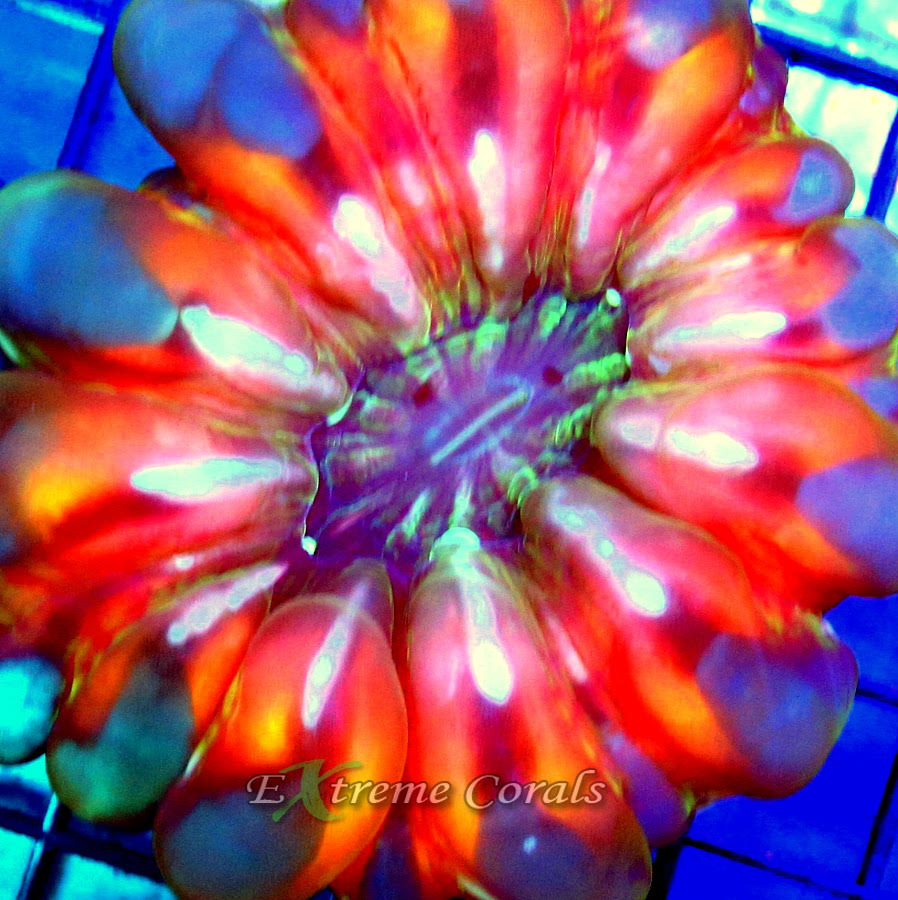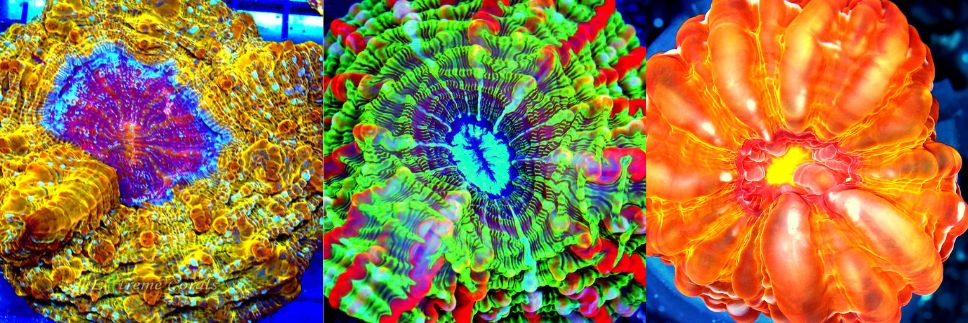Extreme Corals News and Updates
Comparison of Acanthophyllia, Indophyllia, and Cynarina Corals in Reef Aquariums
Exploring the Exquisite Beauty and Care of Acanthophyllia, Indophyllia, and Cynarina Corals for Reef Aquariums
Dive into the care and beauty of Acanthophyllia, Indophyllia, and Cynarina corals. Discover their unique needs for thriving reef tanks. Stunning colors and specific care guide included
by Test test • November 27, 2023
Reef aquarium enthusiasts are drawn to the diverse array of captivating coral species, each with its unique charm and care requirements. Among these, Acanthophyllia, Indophyllia, and Cynarina corals stand out for their exquisite beauty and individual characteristics, making them sought-after additions to reef tanks. These unique LPS "Meat Corals" can be purchased on our site!
Acanthophyllia Coral

Appearance: Acanthophyllia, commonly known as "Meat Corals," exhibit circular formations with distinct fleshy polyps and vibrant colors ranging from vivid greens to mesmerizing reds and oranges. Their tentacles often possess intricate patterns, adding to their visual appeal.
Care Requirements
- Lighting: Moderate to low lighting suits Acanthophyllia. Placing them in shaded areas or lower in the tank prevents tissue bleaching or stress.
- Water Parameters: Maintain stable water conditions with pH levels between 8.1-8.4, temperatures around 75-80°F (24-27°C), and stable alkalinity and calcium levels.
- Water Flow: Gentle to moderate water flow is preferred to prevent damage to the fleshy tissues while allowing proper expansion.
- Feeding: Acanthophyllia benefit from regular feedings. Offer small meaty foods like mysis shrimp or specialized coral food twice a week during nighttime when tentacles are extended.
Coloration and Popular Names: Acanthophyllia come in various striking colors like "Rainbow," "Dragon Soul," or "Ultra." Popular hobby names include "Bleeding Apple," "Cosmic Candy," and "Fruit Loop."
Indophyllia Coral

Appearance Indophyllia, also known as "Tooth Corals," exhibit a robust skeletal structure with mesmerizing colors, often showcasing shades of blue, purple, green, and even fluorescent tones.
Care Requirements
- Lighting: Moderate lighting is ideal, avoiding direct exposure to intense light to prevent tissue damage.
- Water Parameters: Stable water conditions are crucial, similar to Acanthophyllia, maintaining optimal pH, temperature, calcium, and alkalinity levels.
- Water Flow: Gentle to moderate water flow is recommended to prevent damage to the coral's tissues.
- Feeding: Indophyllia benefit from regular feedings similar to Acanthophyllia, enhancing their health and vibrancy.
Coloration and Popular Names: Indophyllia showcase stunning colors and patterns like "Electric Blue," "Galactic Green," or "Cosmic Explosion." Hobby names include "Purple Plasma," "Blue Lagoon," and "Emerald Envy."
Cynarina Coral

Appearance Cynarina, also known as "Meat Coral" or "Doughnut Coral," feature a doughnut-shaped appearance with vibrant colors, including hues of reds, oranges, blues, and greens.
Care Requirements
- Lighting: Moderate lighting is suitable, with shading from intense light to prevent stress.
- Water Parameters: Similar to other corals, maintain stable water conditions, including optimal pH, temperature, calcium, and alkalinity levels.
- Water Flow: Moderate water flow is recommended to prevent tissue damage while facilitating proper expansion.
- Feeding: Cynarina corals are opportunistic feeders. They benefit from occasional feedings of small meaty foods or specialized coral food.
Coloration and Popular Names: Cynarina corals exhibit vibrant colors and are named according to their appearance, such as "Red Velvet," "Neon Green," or "Rainbow Delight." Popular hobby names include "Fruity Pebbles," "Tutti Frutti," and "Sunset Sherbet."
Understanding the distinctive characteristics and specific care requirements of Acanthophyllia, Indophyllia, and Cynarina corals is paramount for reef enthusiasts. By catering to their unique needs regarding lighting, water parameters, flow, and feeding habits, aquarists can create thriving reef ecosystems showcasing the stunning beauty and vibrant colors of these remarkable coral species. Incorporating these mesmerizing corals into reef tanks not only enhances the visual appeal but also contributes to the overall health and diversity of the aquatic environment.

